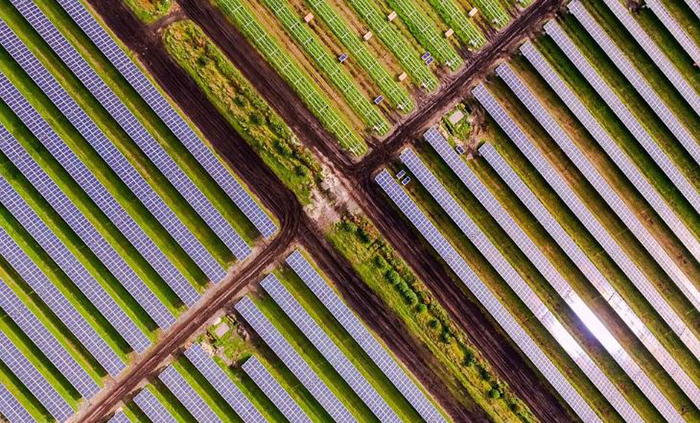The photovoltaic industry mainly includes the application and development of silicon materials and related links, such as the production of high-purity polysilicon, the manufacture of solar cells and modules, the manufacture of related production equipment, and the practical application of photovoltaic power generation. At present, photovoltaics have become an economical and efficient source of electricity in most countries and regions in the world, and will be an important support for green and low-carbon transformation. According to the report of the International Energy Agency, the global new installed capacity of renewable energy in 2023 increased by 50% over the previous year to 510 GW, of which solar photovoltaics contributed about 75%. It is expected that by the beginning of 2025, renewable energy, including photovoltaics, will become the world's main source of electricity.
In recent years, China's solar photovoltaic industry has experienced rapid growth and continues to hold a leading position on the global stage. Thanks to technological progress and continuous improvement in production capacity, China is at the forefront of the world in terms of technology accumulation, market size, manufacturing capacity and degree of perfection of the industrial chain in the photovoltaic industry. China's photovoltaic products can meet the needs of different international markets in terms of power, efficiency, quality, supporting services and localization. Besides exporting their products, Chinese photovoltaic companies are now expanding their global footprint by investing in and establishing factories abroad, marking a new strategic approach to international expansion. According to the report of the International Renewable Energy Agency, the cumulative cost per kilowatt-hour of global photovoltaic power generation projects has dropped by more than 80% in the past decade, which is largely attributed to China's innovation, manufacturing and engineering capabilities.
Photovoltaic products have become a significant component of China's foreign trade exports, with notable growth in their export figures. According to the data of the China Photovoltaic Industry Association, the export volume of silicon wafers, energy storage battery and modules, the main raw materials of China's photovoltaic products, in 2023 will be 70.3 GW, 39.3 GW and 211.7 GW respectively, an increase of 93.6%, 65.5% and 37.9% year-on-year. Although the price of photovoltaic products generally fell in 2023, resulting in a trend of "increase in volume and decrease in price" in total exports, this is mainly due to the outbreak of the European energy crisis and the strong promotion of global energy transformation needs, which led to the rapid expansion of photovoltaic production capacity, and then triggered a global imbalance in supply and demand, causing a sharp drop in the prices of polysilicon, silicon wafers, batteries and modules, and the prices of some links have even dropped by more than 50% compared with the beginning of the year.

In the long run, the trend of global energy green transformation and investment and cooperation in new energy such as photovoltaics will not change, and the installed capacity growth trend of the photovoltaic market will continue. According to TrendForce's forecast, the neutral expectation for global new photovoltaic installed capacity in 2024 is 474 GW, a year-on-year increase of 16%. From the perspective of the four major regional markets, the installed capacity demand in the Asian and European markets will enter an adjustment phase and maintain steady growth; the demand in the US market is expected to pick up significantly, driving the overall market in the Americas to maintain a relatively high growth rate; the Middle East region will accelerate the construction of large-scale photovoltaic ground power stations in Saudi Arabia, the UAE and other countries due to the accelerated advancement of the energy transformation strategy and the decline in component prices.







